Becoming Career Ready: The Professional Practice Course
by James Whaler, on 09/06/2021 1:35:18 PM
When is the best time to be thinking about your career? At what point do you begin preparing for your first role? How do you even start to become ‘career ready’?
University is a new and exciting time in your life. Knowledge and experience doesn't just trickle towards you, it crashes over you like a wave in an ocean of possibilities. With everything you have going on when you start your university degree, the last thing you want to be worried about is whether you're 'career ready' at the end of it… right?
Well, here's something you might not realise: Your career path began on the first day of your university degree and it is a path you will be walking for the rest of your life. So, understand - becoming career ready is not a task, a milestone, or a specific point in time – it is the first leg of your journey. And today, we're going to help walk you through it.
Becoming career ready is not a task, a milestone, or a specific point in time – it is a journey.

How are you going to navigate your path to become career ready? In this blog, we are going to look at one of the first courses in HLT43021 Certificate IV in Allied Health Assistance – the Professional Practice Course.
We will provide an overview of the course, before diving into how it can assist you to become career ready. This will include sharing with you a preview of some learning content (including interactive videos, and points on how to identify behaviours of concern when working as an Allied Health Assistant (AHA)), followed by a segment where a current student in the ERA AHA Program who is studying physiotherapy at university reflects about how they’ve applied skills and knowledge from the course, to make the most of their industry placement.
So, fill your water bottle, pack your snail trail mix, and slip on your hiking boots – we have a fair way to go.
Blog Milestones
- What is Professional Practice all about anyway?
- A (much) better way to learn
- Interactive Learning
- Identifying Behaviours of Concern
- Physio students: Putting skills into practice on industry placement
- Becoming career ready - a journey
What is Professional Practice all about anyway?
ERA’s Allied Health Assistant Program has been designed to place you in the position of a practicing Allied Health Assistant (AHA), working in a (fictional) community-hospital setting by the name of Thornbury Private.
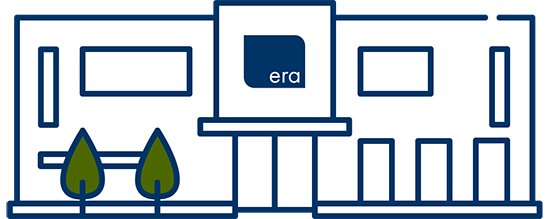
Placing you in this position creates purpose behind your learning, enabling you to understand the real-world requirements expected of you when working within the allied health industry.
Professional Practice is one of five key courses which make up the ERA’s AHA Program. This is brought to life for students in the form of a position description at Thornbury Private. Take a look at the key work areas & responsibilities below:
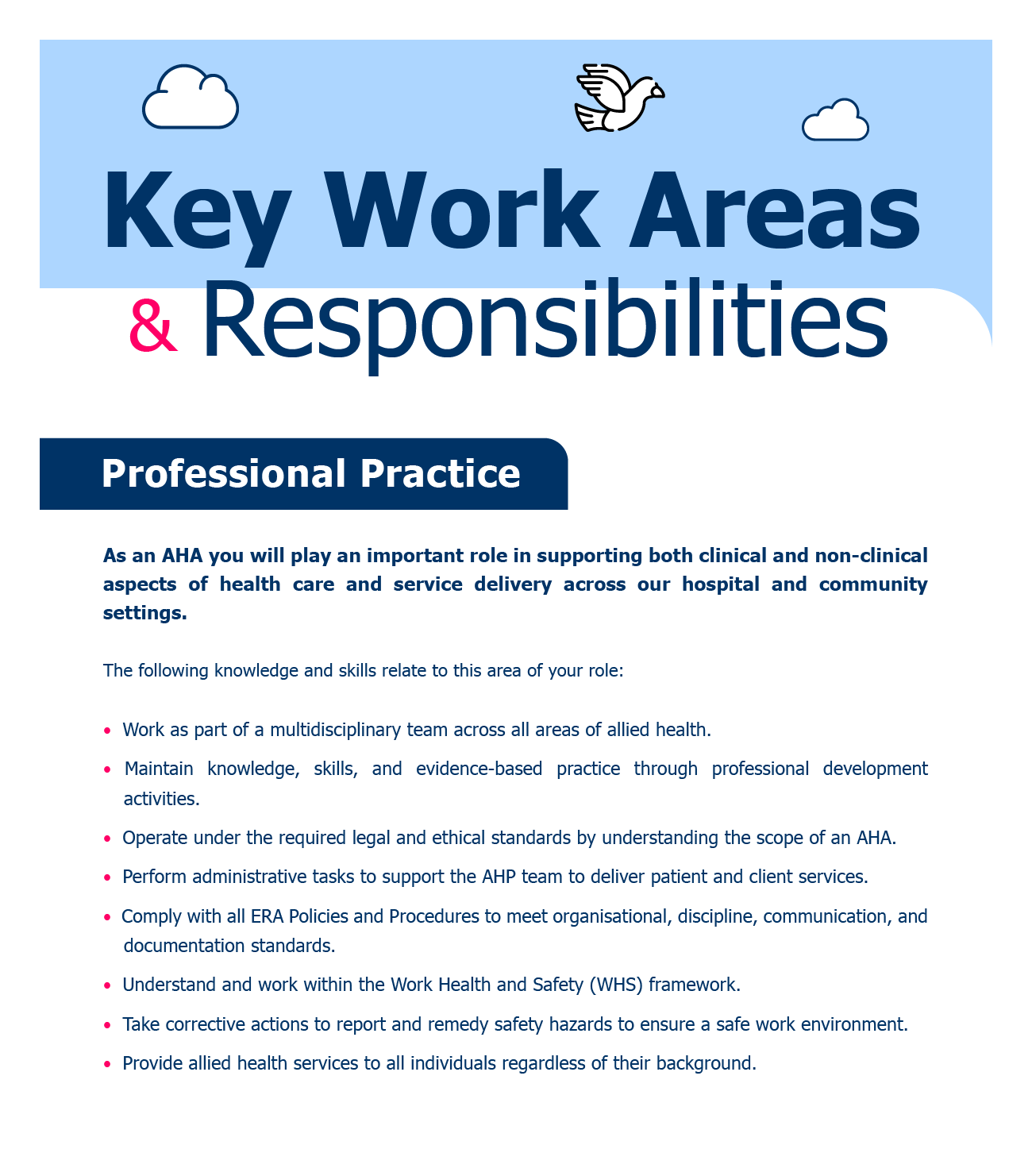
Before we walk any further, ask yourself how many of these points do you think will be a feature in your journey to becoming career ready...?
Every course in ERA's Allied Health Assistant Program has been mapped with your career journey placed front and centre, as the central theme to the program. The unique experience of fulfilling the role of an AHA, while learning the knowledge and skills required in the allied health industry, provides you with an edge that will project you miles ahead of your peers on the path to becoming career ready.
Every course in ERA's Allied Health Assistant Program has been mapped with your career journey placed front and centre, as the central theme to the program.
Now, let's look at how you might go about learning these skills and knowledge. Time to pick up the pace…
A (much) better way to learn
Our team of physiotherapists, exercise physiologists, sports scientists and allied health assistants have all been where you are now. We’ve walked the path you’re currently taking, and if you were to check out our teams’ page on our website, you will see just how many awesome people we have on the team who have walked the Allied Health Program path too.
> Meet the ERA team! <
So, when we set out to create the first course in the program – Professional Practice – we stepped into your shoes and started with you in mind. What would be the best way to gain these important skills and knowledge early on in your career journey, with minimal impact on your current university studies?
When we set out to create the first course in the program, we stepped into your shoes and started with you in mind.
We believe actions speak louder than words, so we want to show you a preview of an interactive video from the Professional Practice course called Responding to an emergency.
Interactive Learning
What you're about to see is one of the assessment projects featured in the Workplace Health & Safety (WHS) module of the Professional Practice course.
Now before we dive in, you might be thinking – “workplace health and safety? This is what you choose to preview?!” Hey, we’re not here to take shortcuts. Yes, WHS will be a huge part of your career success, especially in allied health.
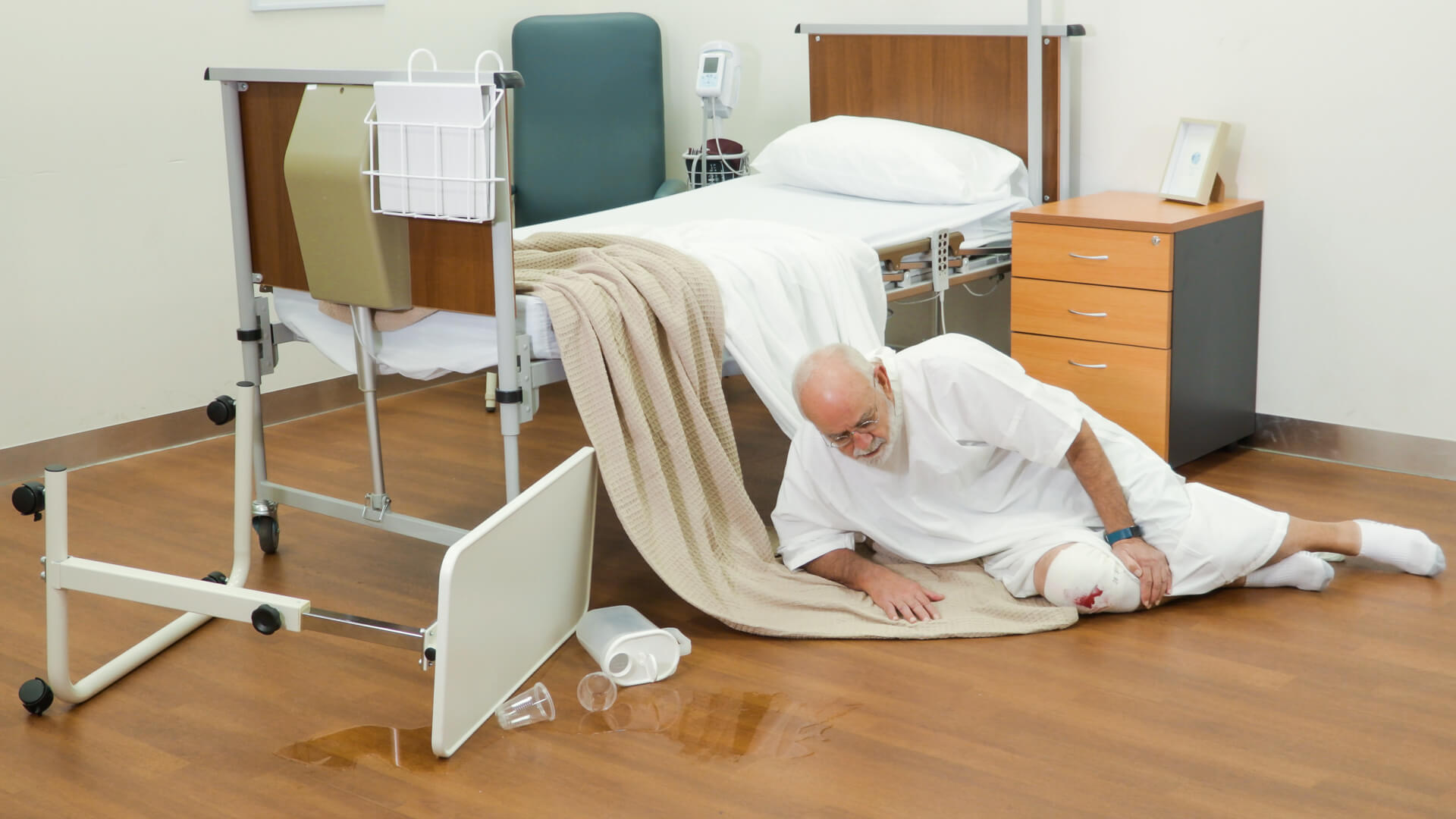
As an allied health professional, whether you’re working as an allied health assistant, or practicing as a physiotherapist, you will soon discover the importance and pride you take in ensuring your workplace is a safe environment for everyone.
Check out the preview page from the course below, and watch the short branching scenario preview which follows:
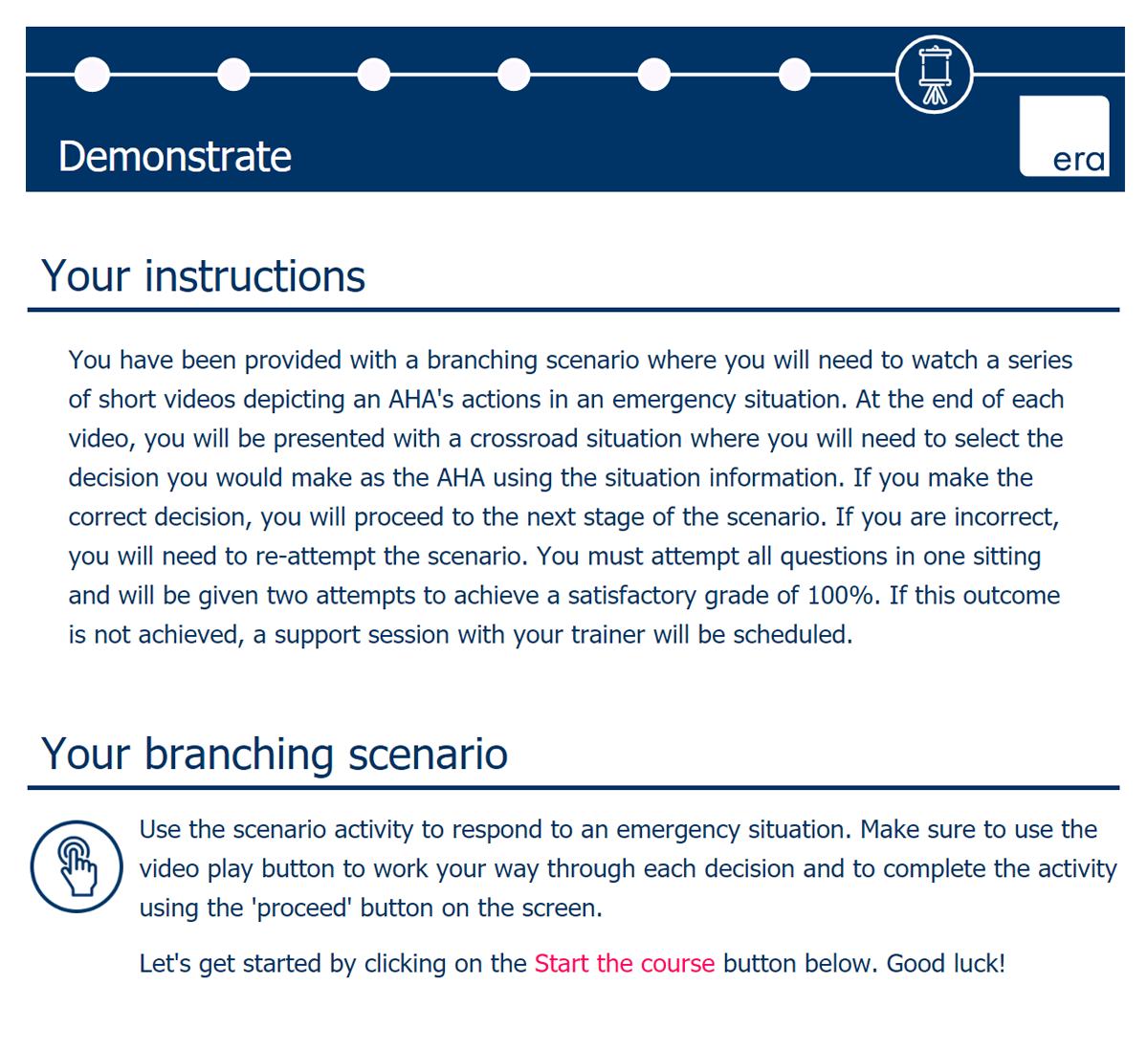
By creating these scenarios and placing you in the driver’s seat, you get to experience a real-world scenario and learn from the decisions you make before ever stepping foot in a hospital or community setting.
Beats learning from a book, right?
Identify Behaviours of Concern
Industry placement is an important component to you becoming career ready? Nothing beats learning from industry professionals while on the job, but the job is still a job. And there will be expectations of you on placement as there will be in your first paid role following your studies.
Towards the end of the Professional Practice course, you will learn about the different behaviours of concern that will be present in your day-to-day clients, patients, and even your colleagues, as well as how to best communicate when presented with challenging situations.
There will be expectations of you on placement as there will be in your first paid role following your studies.
How do we go about teaching this in the course?
Short of sending out a VR headset to each of you (maybe one day?), we created a series of videos that capture realistic scenes showing the behaviours of concern in industry settings.
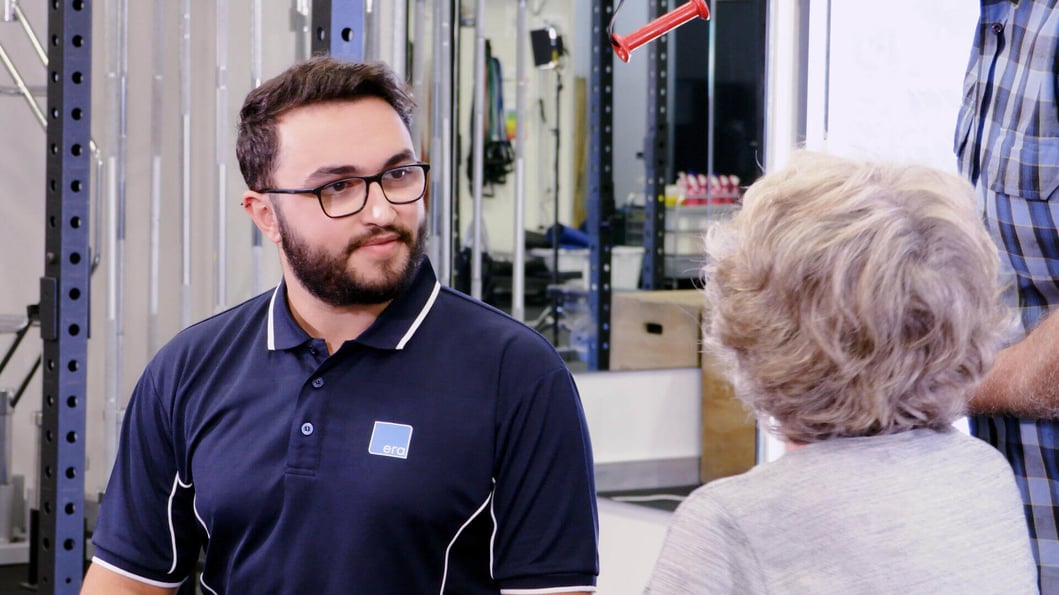
In the learning, you will experience how to identify certain behaviours, before seeing how these behaviours are dealt with in a professional manner. When you are assessed on the behaviours, you will see scenarios play out and just like the branching scenarios, it will be you who decides how these scenarios end.
Check out the two previews for both a learning and assessment scenario below:
Could you identify any behaviours in the videos? Stick around 'til the end of this blog to find out!
When you are presented with these scenarios for the first time in the industry, identifying and reacting accordingly will place you at the top of the list when employers and placement providers are looking for skilled students to meet the growing workforce demand in allied health.
Physio students: Putting skills to practice during industry placement
Recently, we interviewed three of our Allied Health Assistant Program students, all of whom are studying physiotherapy at university. The interviews were based around their experiences while on placement at one of our partners – The Next Step Spinal Injury Recovery & Wellness Centre.
> Placement Opportunities with ERA - The Next Step <
One of our students, Erica, talks to us about her experiences during the Allied Health Assistant Program last year, and how she was able to apply the skills learnt from the program, in practice while on placement.
Check out what Erica had to say below:
"I remember in one of my pre-placement modules at ERA, we learned about the six-minute walk tests, which was really helpful because with one of my client clients at the next step clinic they actually needed to do the six-minute walk test for their outcome measure.
My supervisor, Jake, didn't actually have to go through how to do the test with me because I had already been taught how to do the protocol and how to perform the test at ERA, which was really helpful."
Before Erica even finished her degree, let alone step foot in her first official role as a physiotherapist, she was learning and applying the skills from ERA’s AHA Program, in a client-facing environment while on placement, and all in her first year of university.
While the six-minute walk test is a skill you learn in the later courses of the program, you will have seen from the video how Erica applies herself in the form of Professional Practice.
Becoming career ready
Well, we have been walking for a WHILE! But the end is in sight.
Think about the three questions we asked you at the start of this blog:
Q: When is the best time to be thinking about your career?
A: There is no such thing as a ‘best time’. Your career has already started from the first day of your university degree.
Q: At what point do you begin preparing for your first role?
A: You are already preparing for your first role.
Q: How do you even start to become ‘career ready’?
A: Becoming career ready is not a state of mind, it is a journey. And your journey has already begun.
Thanks for walking with us on this short leg of the journey.
Oh, and before we forget - those behaviours of concern we left you hanging with? The learning video showed self-destructive behaviour from the client, while the scenario video displayed intrusiveness from the patient's husband/carer.
If you are keen to learn more about the Professional Practice course and what else you will learn in the ERA’s AHA Program, please register your interest below, and our Student Program Advisor will be in touch with more information.
Program Information
The HLT43021 Certificate IV in Allied Health Assistance program is a Nationally recognised qualification that provides the necessary skills and knowledge to work as an Allied Health Assistant (AHA) in hospital, clinic and community work settings. For further information on this qualification, view our Program Overview. Any reference to ‘ERA’s Cert. IV in Allied Health Assistance’, 'ERA's Allied Health Assistance Program', or 'ERA's AHA Program', is to mean HLT43021 Certificate IV in Allied Health Assistance. This training is delivered with Victorian and Commonwealth Government funding. Eligibility criteria apply. This qualification is delivered by Exercise Research Australia Pty Ltd. RTOID: 22490

